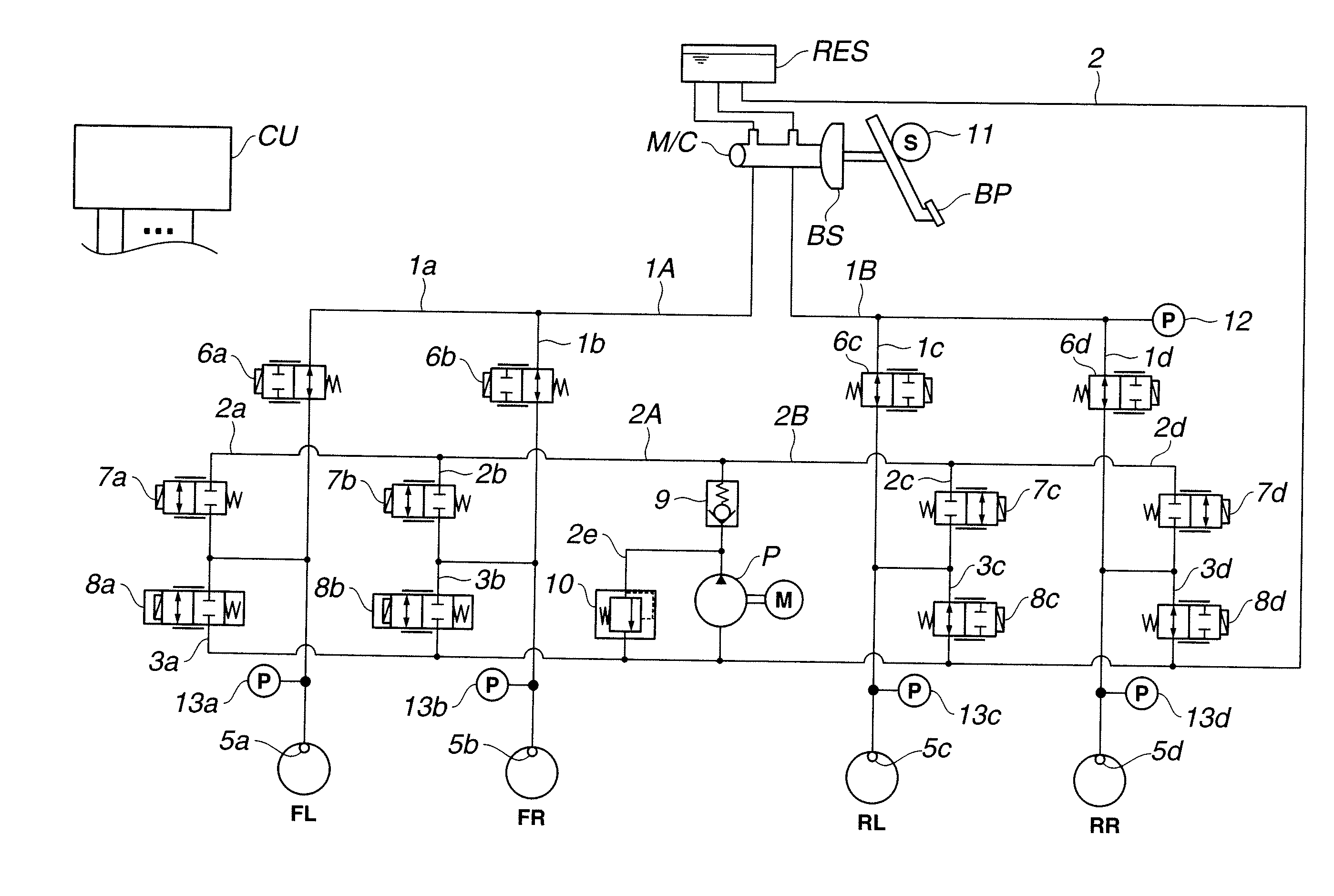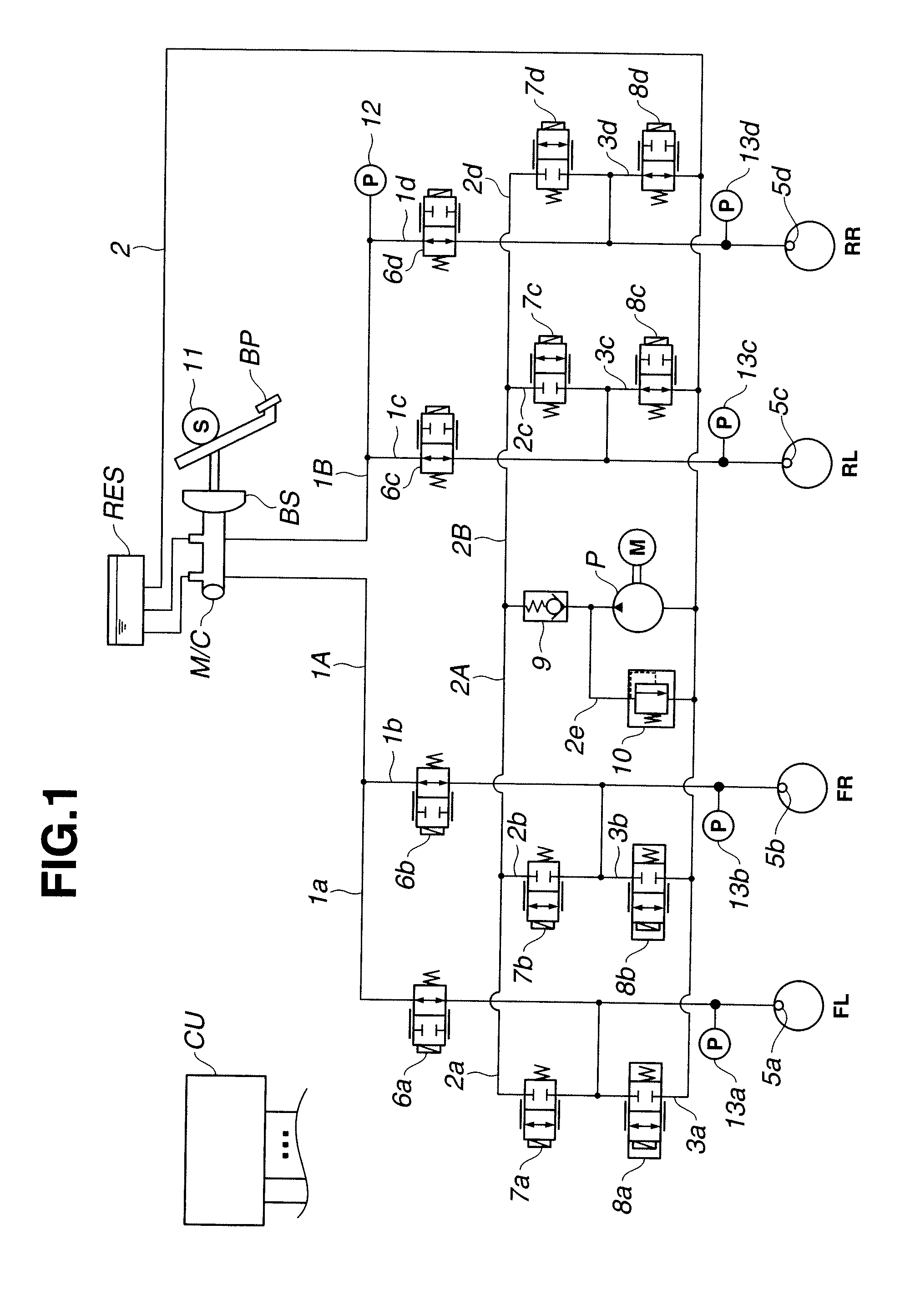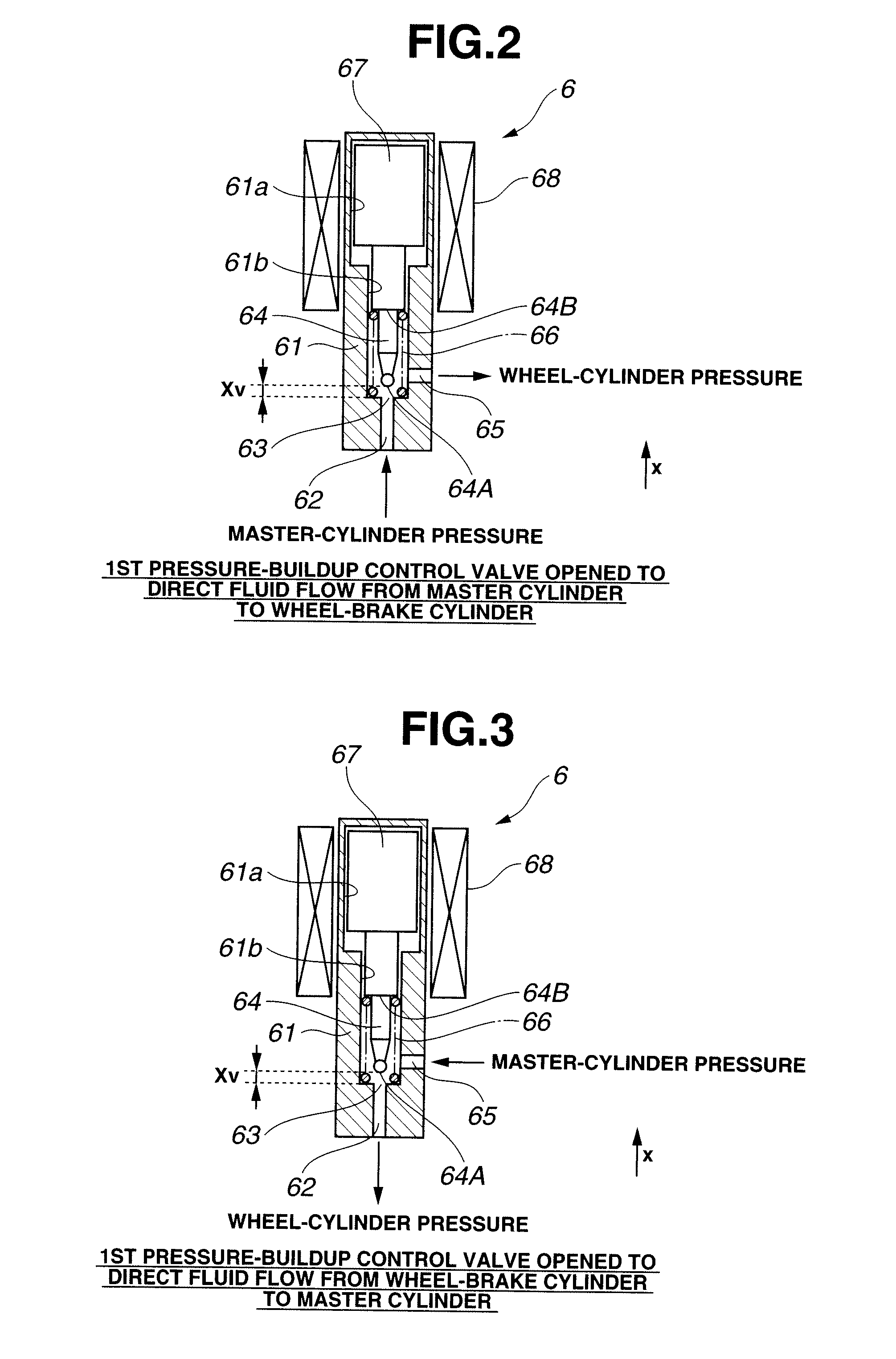Apparatus for and method of controlling brakes
a technology of brakes and actuators, applied in the direction of brake systems, vehicle position/course/altitude control, instruments, etc., can solve the problems of reducing the operability of brakes, and reducing the controllability of wheel-cylinder pressure control. to achieve the effect of enhancing the total controllability of the brake control system
- Summary
- Abstract
- Description
- Claims
- Application Information
AI Technical Summary
Benefits of technology
Problems solved by technology
Method used
Image
Examples
first embodiment
[0038]Referring now to the drawings, particularly to FIG. 1, the brake control system of the first embodiment is exemplified in a four-wheeled automotive vehicle.
[0039][Hydraulic Circuit of Brake Control System]
[0040]As seen in FIG. 1, the brake control system of the first embodiment includes a master cylinder MC whose piston rod is linked through a brake booster BS to a brake pedal BP, a fluid-pressure control unit (or a hydraulic control unit) HCU configured to supply a master-cylinder pressure to each of wheel-brake cylinders 5a-5d of front-left, front-right, rear-left, and rear-right road wheels FL, FR, RL, and RR, and an electronic control unit CU. Hydraulic control unit HCU includes a pump P, and a plurality of electromagnetic valves comprised of a plurality of first pressure-buildup control valves 6a-6d, which are collectively referred to as “first pressure-buildup control valve 6”, a plurality of second pressure-buildup control valves 7a-7d, which are collectively referred t...
second embodiment
Valve Arrangement of Second Embodiment
[0191]An apparatus for controlling brakes, made according to the second embodiment, has almost the same configuration of first pressure-buildup control valve 6 as the brake control apparatus of the first embodiment, but a direction of arrangement of each individual front-wheel side first pressure-buildup control valve 6a-6b and a direction of arrangement of each individual rear-wheel side first pressure-buildup control valve 6c-6d are reversed for the brake control apparatuses of the first and second embodiments. Concretely, in the second embodiment, first ports 62, 62 of first pressure-buildup control valves 6a-6b of the front-wheel side are connected to the respective downstream sides of fluid lines 1a-1b, and thus connected via fluid lines 1a-1b to respective front-wheel side wheel-brake cylinders 5a-5b. That is, first port 62 of each of front-wheel side first pressure-buildup control valves 6a-6b serves as a wheel-cylinder pressure port. On ...
third embodiment
BA Control of Third Embodiment
[0194]Referring now to FIG. 12, there is shown the flowchart concerning the wheel-cylinder pressure control routine executed by control unit CU, incorporated in the brake control apparatus of the third embodiment, during BA control. The control routine of FIG. 12 is also executed as time-triggered interrupt routines. The BA control routine of the third embodiment shown in FIG. 12 is similar to that of the first embodiment shown in FIG. 11, except that step S303 of FIG. 11 is replaced with step S303A of FIG. 12. Thus, the same step numbers used to designate steps in the routine shown in FIG. 10 will be applied to the corresponding step numbers used in the BA control routine shown in FIG. 11, for the purpose of comparison of the first and third embodiments. Step S303A will be hereinafter described in detail with reference to the accompanying drawings, while detailed description of steps S301, S302, and S304-S314 will be omitted because the above descripti...
PUM
 Login to View More
Login to View More Abstract
Description
Claims
Application Information
 Login to View More
Login to View More - R&D
- Intellectual Property
- Life Sciences
- Materials
- Tech Scout
- Unparalleled Data Quality
- Higher Quality Content
- 60% Fewer Hallucinations
Browse by: Latest US Patents, China's latest patents, Technical Efficacy Thesaurus, Application Domain, Technology Topic, Popular Technical Reports.
© 2025 PatSnap. All rights reserved.Legal|Privacy policy|Modern Slavery Act Transparency Statement|Sitemap|About US| Contact US: help@patsnap.com



